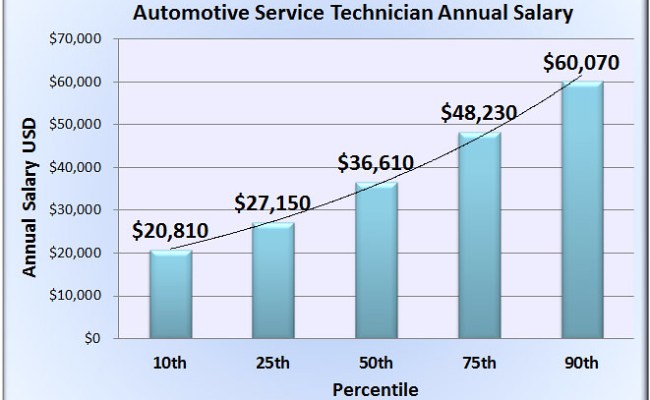
Here's how to check alternator voltage. There are many tricks and tips that can be used to diagnose the problem. To properly test your alternator voltage, make sure to follow the instructions in this article. Hopefully, you'll have a problem-free drive in no time. Turn off your car and take the battery out. Once you have removed the battery, you should be able to check the voltage at the alternator.
Check the diodes
Dialogue is the most crucial part in diagnosing an alternator fault. Diodes are what allow current to travel through the alternator and reach the battery. An excellent connection will keep your battery charged and your electric system running smoothly. If the diodes work properly, the alternator will show a very small amount of current on the instrument panel. The diodes are responsible for protecting sensitive electronic equipment such as the alternator. They should also be functioning properly.

The rectifier assembly is six diodes and controls the alternator's charging output. The alternator's charging output will drop significantly if one or both of the diodes fail. The alternator will still be capable of producing sufficient current but it will not be able maintain a full charge. It is important to perform an alternator bench-test in order to diagnose the problem. This test will determine if the alternator is capable of producing the rated voltage and check its internal regulators as well.
Check the pulley bearing
There are two ways to test a pulley bearing on an alternator. You have two options: either pull it out manually, or you can use a rubber mallet and hammer it out. You will need the correct tools to disassemble the alternator. The pulley hub is attached to the housing of the alternator by a big nut. You must remove the nut from the pulley knob to access it. An impact gun or 15/16-inch pass through socket are required to accomplish this. After replacing the pulley bearing, you will need to reassemble it.
Push testing is another way of checking the pulley bearing. Although this test may not always be accurate, it can tell you if your battery is low or needs to replace. These steps will ensure your alternator is in top shape. It will save you money by not having to replace your alternator. This method is highly recommended, because it is inexpensive.
Verify the voltage at an alternator
First, check the voltage at alternator. If your car won't start, you can do this: This is a much simpler test than changing the headlamp bulb or windshield wiper blades. Use a multimeter for measuring the voltage output of the alternator to check the voltage. The step-by -step procedure includes an explanation of how to use your multimeter. YouTube also has a video showing the process.

You can check the voltage at an alternator by charging it and making sure that it has enough power to turn the car on. A battery with a voltage greater than 12.7 volts is considered the norm. You might need to replace your battery if it falls below that voltage. Haynes manuals are available online for those who don't know how to repair the battery. Haynes manuals come in a range of price points and have step-by–step procedures.
FAQ
Is it easy to get a job as an automotive mechanic?
It can be done. Many garages have vacancies that are advertised online. Many people apply because they think it will be fun. Try applying to a few jobs and seeing if the garages accept student applications. Ask your friends and family to recommend anyone in the field. You might be able to refer someone.
Is a career in automotive mechanic promising?
If you are determined to excel, the automotive industry offers many opportunities. Working hard and learning from others is the best way to be successful in this field.
Because you will be spending most of your time communicating with customers and employees, you will need excellent communication skills. You will need to be able and willing travel for work, making it more difficult to commute.
If you're interested in pursuing a career in automotive, consider taking classes at community colleges and universities. Many schools offer programs for students who are interested to learn about auto sales, customer service, or repair.
If you decide to pursue a degree, you should study mechanical engineering. You can earn a bachelor's in as little four years.
Many companies will hire students straight out of college. You should start looking for employment as soon as you are able to continue your studies part-time.
After you've finished your education, it's likely that you'll need to go through some training before you can be hired as an auto technician.
This means that you will need to pass tests such as the Automotive Excellence (ASE) certification exam. This test covers topics including engine maintenance, brakes, steering systems, suspension, and more.
Once you have passed the ASE Test, you are eligible to apply for a National Institute for Automotive Service Excellence License.
You can repair vehicles owned by private citizens with a license. In exchange, you'll receive compensation based on the number of services performed.
It is important to remember that not all states require licensing. If you intend to work in another state, however, you will need a license.
Some states don't issue licenses until after completing a certain amount of training. This could be you.
What information do I need about car mechanics
To work as an auto technician, you don’t need to know much about cars. All you need to know is how to fix things. This is why most people get started with simple jobs such as changing brake pads or tires. Then they move on to more difficult repairs.
You will need to understand written instructions, read diagrams and follow the basic rules of good practices. You'll also need to be able to judge whether parts need replacing or repairing.
It is important to understand that vehicle repairs should only be attempted by those who have received the proper training. This is especially important if you work with expensive parts such as transmissions or engines.
Although you won't be required to know much about cars you should have a solid understanding of the fundamentals and principles of mechanical engineering. This involves understanding how engines work and how brakes work.
Noting that all situations are possible, it is important to be prepared. If your vehicle has been in an accident, you might need to be able to handle it. Additionally, you will need to have experience with handling accidents and breakdowns.
Finally, you need to be willing and able to quickly learn new skills. You will need to be able not only to diagnose problems but also to perform simple maintenance tasks like tightening bolts and nuts.
Statistics
- The U.S. Bureau of Labor Statistics (BLS) reports that the job outlook for automotive service technicians and mechanics is expected to decline by 4% from 2019 to 2029. (indeed.com)
- There were 749,900 jobs available for automotive service technicians and mechanics in 2016, which is expected to grow by six percent through 2026. (jobhero.com)
- According to the BLS, the median annual salary for automotive service technicians and mechanics in the United States was $44,050 in May 2020. (uti.edu)
External Links
How To
How to become an Automotive Technician
A technician who works on vehicles is an automotive technician. He/she works in car dealerships as well as auto shops, garages, and service centers. He/she works with customers to repair their cars and trucks, ATVs or snowmobiles. An automotive technician must be able to diagnose problems and make repairs quickly, safely, accurately, and efficiently.
An associate degree from a vocational school is required for anyone who wishes to become an automotive technician. After completing this program, he/she must pass the National Institute for Automotive Service Excellence (ASE) certification exam. ASE stands to American Society of Mechanical Engineers. Two sections make up the ASE certification examination. The first section tests your mechanical skills, while the second tests your practical knowledge. You must attend one of the authorized testing sites to take the test. These locations can be found online or at your local auto dealer.
After passing the exam, a candidate must take a state exam before being licensed as an automobile technician. This process can vary depending on where the applicant lives. Some states require candidates to complete a training program, while others let them study on their own. Some states allow technicians to become licensed right away after receiving their license. While others wait until they have had at least six years of experience as an automotive technician.
To become an automotive technician, one must apply at a local dealership. Most new employees work as apprentices after they have been hired. Apprenticeships typically last three years. During this time, a student learns how to perform basic repairs, such as changing oil, adjusting brakes, replacing tires, cleaning spark plugs, inspecting engine compartments, and performing routine maintenance. Some students learn how to do advanced repairs, such as installing air filters, replacing shocks, repairing engines, and replacing transmission fluids. Schools offer classes during business hours. Some schools also offer evening classes, if necessary.
After completing an apprenticeship, a student becomes a journeyman. Journeymen generally spend four- to five decades learning how to fix major systems like transmissions. You will also learn how to repair complicated electrical components, as well as how to remanufacture engines and rebuild transmissions. Many employers prefer hiring journeymen because they know the job well and understand what the customer expects.
A candidate who passes all the necessary exams and gets a license might be interested in opening his/her own business. The Bureau of Labor Statistics estimates that there were nearly 1.7 million jobs available for automotive mechanics in 2010. That number was expected to grow by 18 percent from 2009 to 2020. If a candidate decides to open his/her own shop, he/she should prepare to invest many thousands of dollars in equipment and supplies.
Many factors affect the automotive technician's salary, including location, education, experience, and employer type. On average, an unemployed person could earn $20,000 annually. Someone who has only a highschool diploma could earn around 21,000 dollars per year. Those with an associate's degree earned approximately $24,000 per year. Technicians with a bachelor’s degree made about $27,000 annually. Master's degree holders make around $32,000 annually. A common trend is for salary increases to occur so a professional making less than $30,000 can reasonably expect to be earning $40,000 or more within a few years.